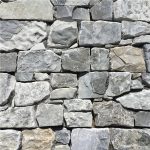Unveiling the Beauty and Benefits of Cultured Stone Veneer

Introduction:
Cultured stone veneer has revolutionized the world of construction and design, offering a versatile and cost-effective alternative to natural stone. This innovative material combines the aesthetic appeal of natural stone with the convenience and affordability of manufactured products. In this comprehensive guide, we will explore the various aspects of cultured stone veneer, from its composition and manufacturing process to its installation and maintenance. We will also examine the benefits and applications of this popular building material, shedding light on why it has become a preferred choice for homeowners, architects, and contractors alike.
What is Cultured Stone Veneer?
Cultured stone veneer, also known as manufactured stone or faux stone, is a man-made material designed to replicate the look and feel of natural stone. It is composed of cement, aggregates, and iron oxide pigments, which are cast into molds to create realistic stone textures and colors. Cultured stone veneer is typically lighter and more affordable than natural stone, making it an attractive option for various construction and remodeling projects.
Manufacturing Process:
The manufacturing process of cultured stone veneer involves several steps to ensure the quality and authenticity of the final product. First, a mold is created based on the desired stone texture and shape. The mixture of cement, aggregates, and pigments is then poured into the mold and allowed to cure. Once the material has hardened, it is removed from the mold and trimmed to the desired size and shape. Finally, the cultured stone veneer is treated with sealants and coatings to enhance its durability and weather resistance.
Benefits of Cultured Stone Veneer:
Cultured stone veneer offers a wide range of benefits that make it an attractive choice for both residential and commercial applications. Some of the key advantages of this material include:
1. Cost-Effective: Cultured stone veneer is typically more affordable than natural stone, making it a budget-friendly option for homeowners and contractors.
2. Lightweight: Cultured stone veneer is lighter than natural stone, which makes it easier to transport, handle, and install.
3. Versatile: Cultured stone veneer comes in a variety of textures, colors, and shapes, allowing for endless design possibilities.
4. Easy to Install: Cultured stone veneer can be installed using standard masonry techniques, saving time and labor costs.
5. Durable: Cultured stone veneer is highly durable and resistant to weather, moisture, and insects, ensuring long-lasting beauty and performance.
Applications of Cultured Stone Veneer:
Cultured stone veneer is a versatile material that can be used in a wide range of applications, both interior and exterior. Some common uses of cultured stone veneer include:
1. Exterior Facades: Cultured stone veneer can be used to enhance the exterior facade of residential and commercial buildings, adding texture and visual interest.

2. Fireplaces: Cultured stone veneer is a popular choice for fireplace surrounds and mantels, creating a warm and inviting focal point in any room.
3. Accent Walls: Cultured stone veneer can be used to create dramatic accent walls in living rooms, bedrooms, and other interior spaces.
4. Outdoor Living Spaces: Cultured stone veneer is ideal for adding character and charm to outdoor patios, kitchens, and fire pits.
5. Landscaping: Cultured stone veneer can be used to create retaining walls, garden borders, and decorative elements in landscaping projects.
Installation and Maintenance:
Installing cultured stone veneer requires careful planning and attention to detail to ensure a professional and long-lasting result. The following steps outline the typical installation process:
1. Surface Preparation: The surface where the cultured stone veneer will be installed must be clean, dry, and structurally sound. Any existing siding or finishes should be removed, and a moisture barrier may be required.
2. Application of Scratch Coat: A scratch coat of mortar is applied to the substrate to create a rough surface for the veneer to adhere to.
3. Installation of Cultured Stone Veneer: The cultured stone veneer pieces are individually placed on the scratch coat, starting from the bottom and working upwards. Mortar is used to secure the stones in place and fill in any gaps between them.
4. Grouting and Sealing: Once the cultured stone veneer is installed, grout may be applied to fill in the joints between the stones. A sealant is then applied to protect the veneer from moisture and staining.
To maintain the beauty and integrity of cultured stone veneer, regular cleaning and maintenance are recommended. Simply washing the veneer with a mild detergent and water can help remove dirt and debris. Avoid using harsh chemicals or abrasive cleaners, as these can damage the finish of the veneer. Additionally, inspect link for any signs of damage or wear and tear, and repair as needed to prevent further issues.
Conclusion:
Cultured stone veneer is a versatile and cost-effective building material that offers the beauty and durability of natural stone without the high price tag. With its realistic textures, colors, and shapes, cultured stone veneer can enhance the aesthetic appeal of any residential or commercial space. Whether used for exterior facades, interior accent walls, fireplaces, or landscaping, cultured stone veneer provides endless design possibilities and lasting performance. By understanding the manufacturing process, benefits, applications, and installation of cultured stone veneer, homeowners, architects, and contractors can make informed decisions about incorporating this innovative material into their projects.
